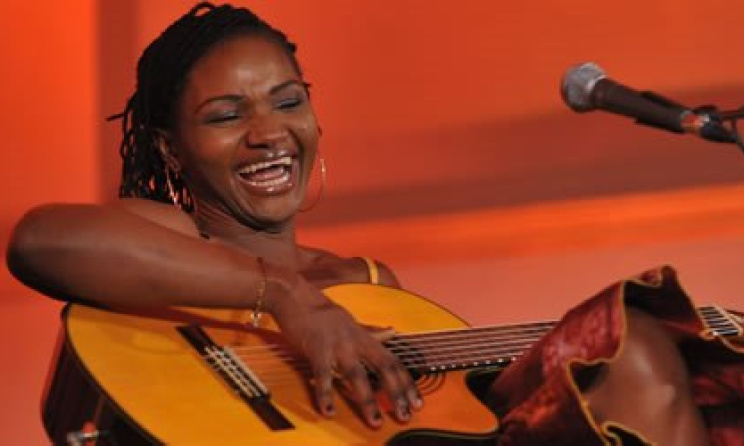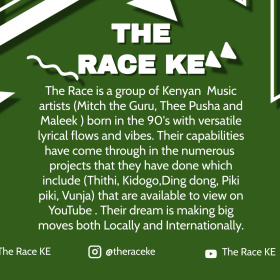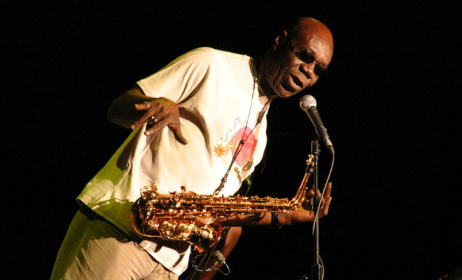Popular music in Cameroon
By Frank William Batchou
There are plenty of talented musicians in Cameroon and many of them remain unknown. Only a few young artists get their breakthrough; most can’t launch a real career because unfortunately their songs are of very poor quality. This text provides an overview of popular music in this great country of central Africa.
 Kareyce Fotso. photo by Jazz Rhone Alpes
Kareyce Fotso. photo by Jazz Rhone Alpes
Cameroonian popular music has suffered a major setback after a prosperous period in the 1980s and 90s.Songs and choreographies became less and less polished, some even obscene. This is due to the influence of foreign trends on local artists who always look for the easy way out. For this reason, says sound engineer Blaise Essame, Cameroonian popular music is “a brutal fallout due to foreign influence. Artists simply don’t want to work any more, counting only on computers to do the job. Most of them own a home studio, so they can record their songs right away. They think they know it all and don’t care much about getting advice. Local rhythms are so transformed that elders don’t recognize anything anymore”.
Local artists also copy international artists when it comes to clothing style, which results in outfits that are considered ‘shameless’ by many. According to talent agent and producer Florence Tity-Dimbeng, “Cameroonian music has a lack of identity; it has become senseless. It’s a copy of what has already been copied. It doesn’t even make you want to dance. A country like Cameroon, with so much artistic potential, doesn’t even have a music academy!”
Despite everything, the evolution of music can be seen from a different angle. According to art critic Théodore Kayese, “You have to look at every area of the country separately. Over the last 10 years, each part of Cameroon has had its hour of glory: the coast with makossa, the western part with ben-skin, the centre, east and south with Bikutsi. Only the north didn’t really have a specific style. This is the only way to get a real opinion about popular music styles in Cameroon.”
On top of these rhythms, let’s not forget afro-fusion and particularly hip-hop, which is very popular among young people thanks to artists like Krotal, Gasha, Stanley Enow, Kareyce Fotso, X-Maleya, Sanzy Viany. A young generation of artists is definitely ready to take off, among them Papy Anza, Tizeu No Name Crew, Jovi, Duc-Z, Sine, One Love and Guy Michel Kingue.
Hip-hop : ready to take over the world?
Competition is harsh but can raise levels of performance. Hip-hop stars try to compete with those of countries like Nigeria, France or even the USA. It all started in 2008 with Sine, when he won the Africa Star contest. In 2010, rapper Krotal took part in the official compilation of the football World Cup in South Africa. Since 2013, Stanley Enow’s single Hein Père has been played around the globe and has received numerous accolades, such as Best New Act at the 2014 MTV Music Awards in South Africa and Best African Revelation at the AFRIMMA Awards. X-Maleya’s concert at the Olympia in Paris on 24 September 2014 was sold out, a once-in-a-lifetime opportunity for this Cameroon-based band.
However, producer Bonas Hanson is convinced that “hip-hop in Cameroon is on the wane. We don’t have producers and distributors anymore. There’s a lack of organization in the business and most artists who are trying to make it in the industry are not aware of how things really work… Very few of them try to keep it up, but not for long”. Despite all these issues, Cameroonian hip-hop artists are determined to take over the world.
Bikutsi: a musical genre many find obscene
In his book "Bikutsi in Cameroon" (2004), Cameroonian writer Jean Maurice Noah describes this musical style as a series of daring texts talking mainly about sex, jealousy, gossip and contentious relationships between men and women. For many years, bikutsi has been very popular in central and southern Cameroon, followed by hip-hop.
Bikutsi is becoming more and more popular. However, it is also highly criticized. It almost always talks about the “lower part of the body” as Lady Ponce would say in her song. Artist Vero la Reine is concerned: “If the producers and the audience are forcing the singers to sing pornography to sell more, how will the real Beti culture turn out? Do we still have respect for our culture? Do we still have respect for ourselves? Do we still have respect for the rest of the world? Is this what we want Cameroon to look like? Is this Bantu culture? All developed or emerging countries really value their cultures - look at China, India, Brazil, the USA, France or Austria… I’m personally convinced that Cameroon can’t move forward if we don’t go back to our Bantu values and if we don’t give more credit to our traditional music, including bikutsi”.
Makossa, ben-skin and mangambeu: endangered rhythms?
Despite the efforts of artists such as Marole Tchamba, Pierre Didi Tchakounté, Saint Bruno, Ben Decca, Sergeo Polo, Sam Mbende and others, the genres of makossa, ben-skin and mangambeu, after being extremely popular in the 80s and 90s, all seem to be short of breath, both in Cameroon and abroad. DJs may be remixing them to give them a new lease of life, but these styles are hopelessly out of tune, says radio host Patrice Noella. According to him, artists should work harder to impress the public all over again. There’s still so much to do to make these three typically Cameroonian musical genres successful again.
Assiko: from healing to celebration
Since the deaths of Samson ‘chaud gars’ (‘hot stuff’) and guitarist Jean Bikoko Aladin, a new generation of artists, such as Olivier de Clovis Bonga, Aladine Bikoko, Fleur Devault, Kristo Numpuby and Paul Balomog, are working hard to revive Assiko, the cultural rhythm of the Beti and Bassa tribes. Assiko used to be performed during healing sessions and has now become a festive musical style played on guitar, traditional drums and nowadays even metal objects or empty bottles. Assiko has almost been replaced by another genre, called makounè. But both styles are striving to get a breakthrough and expand in Cameroon or around the world.
The tentative return of Sahelian music
The various musical styles of Cameroon’s northern region have been trying for the last 10 years to come out of anonymity. In an interview, northern Cameroon promoter and cultural compère Saidou Mohamadou explained: “You can’t possibly set up a concert in certain parts of the country without inviting artists from the great north. Their rhythms are indeed so powerful, they are often part of duets with their southern counterparts. There can’t be a real concert with artists from the north”.
This vision has largely been made possible thanks to the efforts of promoters such as Inesbo and Fadah kawtal, Wainabe, Amina Pulloh, the Garaya band, Abba Djaoro, Soumai Esther and others. One can only hope for a total revival, just as in the 1980s with Sanda Oumarou, Ali Baba, Abdou Benito and Boukar Doubo, who really personified the music of northern Cameroon. Despite an apparent loss of prestige in Cameroonian popular music, in particular due to the influence of foreign rhythms, themes, lyrics and fashion, the various genres of popular music outlined above remain a unifying factor that celebrates and preserves cultural diversity in Cameroon.
References
http://cameroonwebnews.com/2012/04/15/florence-titty-dimbeng-la-musique-camerounaise-est-malade-de-son-identite/ http://www.rfimusique.com/actu-musique/bikutsi/album/20111209-nouvelle-scene-bikutsi-cameroun http://africa-info.org/culture/360-cameroun-comprendre-le-bikutsi-origine-et-diagnostic.html http://www.mampouya.com/article-interview-de-vero-la-reine-du-bikutsi-53100641.html http://www.camer.be/20064/1:6/etats-unis--usa-une-lecon-de-makossa-infligee-a-petit-pays-du-cameroun-depuis-los-angeles-aux-texte-et-video.html http://www.maybach-carter.com/2012/08/le-h-i-v-de-jovi-tirer-le-hip-hop-camerounais-vers-le-haut/ http://hiphopy.com/dossiers/le-hip-hop-en-afrique-est-une-mode-avant-detre-une-culture/ http://www.africultures.com/php/?nav=livre&no=871 http://www.kmer-septentrion.com/musiques.html



















Comments
Log in or register to post comments